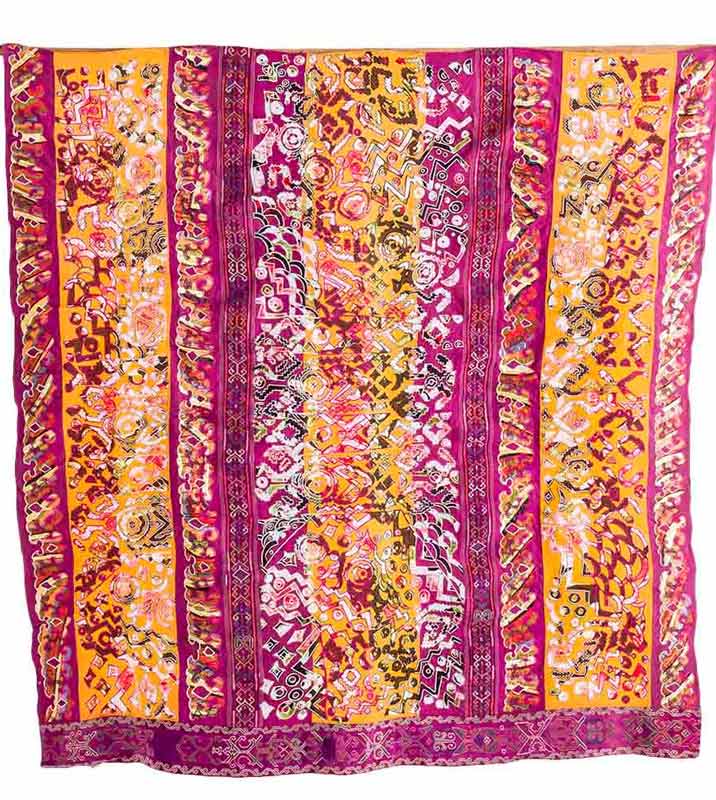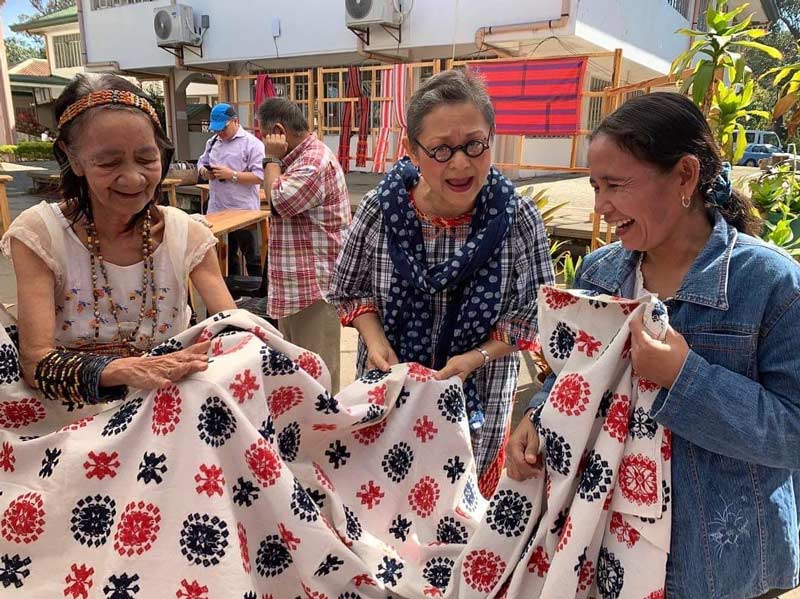Pieces of natural, sepia, and black colored piña were combined to create checkerboard, argyle, and brick designs.
Woven wonders from artist and designer Patis Tesoro will be shown in an exhibition at Mega Fashion Hall from July 5 to 14, 2022.
READ ALSO: Works By Filipino Modern And Contemporary Greats And Artists Talks Banner This July Festival
Called Busisi, the exhibit is a joint project of Finale Art File and SM, and is curated by Gino Gonzales. It will feature a selection of textile art and intricate tapestries characterizing Tesoro’s approach to graphic arts and textile design.

The Filipino word busisi translates to fastidiousness, while its adjective mabusisi means meticulous. In the arts and crafts, being mabusisi connotes attention to minute details. It also articulates a unique Filipino sensibility that permeates Tesoro’s embroidered textiles and fabric collages.
As a textile designer and prominent advocate for the promotion and conservation of indigenous and traditional Filipino fashion and textiles, Tesoro has worked with artisans in Kalibo, Aklan, where piña is still woven today, and in Lumban, Laguna to embroider piña cloth.
In the 1980s, Tesoro was at the forefront of the production of piña-seda (a textile that combines pineapple and silk threads) and piña-abaca (pineapple and abaca fibers). She also admonished the use of natural dyes and the farming of plants that produce these pigments.

After more than 30 years of an extremely demanding pace in the fashion business, Tesoro moved to the more rustic setting of Putol, Laguna. Here she cultivated an environment which reflected her philosophy of harmonious co-existence with nature. “I don’t throw away anything,” Tesoro says, and this propensity for salvaging bits and pieces was evident in her assemblages from the shop’s precious retazos (remnants of textiles).
Over the last four years she designed tapestries that combined printed cloth, embroidered nipis [a generic term referring to fabrics made from fine fibers of abaca, pineapple, maguey, raw silk or a combination of these in the nineteenth century, as well as hand-dyed materials – Sandra Castro].
Unsatisfied with mere patchwork, she guided her atelier in the application of various surface decoration. Beadwork and obsessive stitching introduced texture on an otherwise flat surface. They also layered new forms over the existing patterns.

In contrast to the flourishes of traditional embroidery on piña cloth, Tesoro’s compositions of the diaphanous material produced vivid geometric patterns. Pieces of natural, sepia, and black colored piña were combined to create checkerboard, argyle, and bricks—all reminiscent of 20th century pattern design. There were also references to the triangular linework of indigenous ikats.
While emphasizing the graphic compositions, the needlework also imbued the works with a more personal stamp. A hand embroidered flower or fern occasionally emerged to disrupt the repetitive motif.
The rogue patches certainly belonged to a bolt of embroidered piña. Was it for barong or a traje de mestiza created in Tesoro’s atelier? In any case, the tiny peculiarities contributed micro histories within the larger story of a tapestry.

Busisi, which was first exhibited in Finale Art File in March 2022, will be at SM Megamall from July 5 to 14.
Banner: Abaca material with organza backing, upcycled hand embroidery art work, 30 x 137 inches





